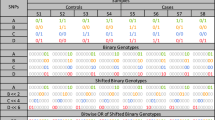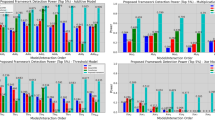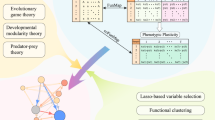Abstract
Detection of epistatic interaction between loci has been postulated to provide a more in-depth understanding of the complex biological and biochemical pathways underlying human diseases. Studying the interaction between two loci is the natural progression following traditional and well-established single locus analysis. However, the added costs and time duration required for the computation involved have thus far deterred researchers from pursuing a genome-wide analysis of epistasis. In this paper, we propose a method allowing such analysis to be conducted very rapidly. The method, dubbed EPIBLASTER, is applicable to case–control studies and consists of a two-step process in which the difference in Pearson's correlation coefficients is computed between controls and cases across all possible SNP pairs as an indication of significant interaction warranting further analysis. For the subset of interactions deemed potentially significant, a second-stage analysis is performed using the likelihood ratio test from the logistic regression to obtain the P-value for the estimated coefficients of the individual effects and the interaction term. The algorithm is implemented using the parallel computational capability of commercially available graphical processing units to greatly reduce the computation time involved. In the current setup and example data sets (211 cases, 222 controls, 299468 SNPs; and 601 cases, 825 controls, 291095 SNPs), this coefficient evaluation stage can be completed in roughly 1 day. Our method allows for exhaustive and rapid detection of significant SNP pair interactions without imposing significant marginal effects of the single loci involved in the pair.
Similar content being viewed by others
Log in or create a free account to read this content
Gain free access to this article, as well as selected content from this journal and more on nature.com
or
References
Marchini J, Donelly P, Cardon LR : Genome-wide strategies for detecting multiple loci that influence complex diseases. Nat Genet 2005; 37: 413–417.
Wellek S, Ziegler A : A genotype-based approach to assessing the association between single nucleotide polymorphisms. Hum Hered 2009; 67: 128–139.
Gretton A, Borgwardt K, Rasch B, Schölkopf B, Smola A : A kernel method for the two-sample-problem. NIPS 2006; 513–520.
R Development Core Team. R: A language and environment for statistical computing. Vienna, Austria: R Foundation for Statistical Computing, 2009. ISBN 3-900051-07-0, http://www.R-project.org.
Buckner J, Wilson J, Seligman M, Athey B, Watson S, Meng F : The gputools package enables GPU computing in R. Bioinformatics 2010; 26: 134–135.
Erhardt A, Czibere L, Roeske D et al: TMEM132D, a new candidate for anxiety phenotypes: evidence from human and mouse studies. Mol Psychiatry 2010, e-pub ahead of print 6 April 2010; doi:10.1038/mp.2010.41.
Nischwitz S, Cepok S, Kroner A et al: Evidence for VAV2 and ZNF433 as susceptibility genes for multiple sclerosis. J Neuroimmunol 2010; 227: 162–166.
Schüpbach T, Xenarios I, Bergmann S, Kapur K : FastEpistasis: a high performance computing solution for quantitative trait epistasis. Bioinformatics 2010; 26: 1468–1469.
Herold C, Steffens M, Brockschmidt F, Baur MP, Becker T : INTERSNP: genome-wide interaction analysis guided by a priori information. Bioinformatics 2009; 25: 3275–3281.
Hoh J, Ott J : Mathematical multi-locus approaches to localizing complex human trait genes. Nat Rev Genet 2003; 4: 701–709.
Zhao J, Xiong M : Test for interaction between two unlinked loci. Am J Hum Genet 2006; 79: 831–845.
Zaykin DV, Meng Z, Ehm MG : Contrasting linkage-disequilibrium patterns between cases and controls as a novel association-mapping method. Am J Hum Genet 2006; 78: 737–746.
Hu X, Liu Q, Zhang Z et al: SHEsisEpi, a GPU-enhanced genome-wide SNP-SNP interaction scanning algorithm, efficiently reveals the risk genetic epistasis in bipolar disorder. Cell Res 2010; 20: 854–857.
Acknowledgements
This work was funded in part by the Max Planck Society. Support through the German ministry for Education and Research (BMBF) through the NGFN (Moods—01GS08145 to BMM) and the project Control-MS within the German Competence Network Multiple Sclerosis (KKNMS) is gratefully acknowledged. KT is supported by MEXT Kakenhi 21680025 and the FIRST program.
Author information
Authors and Affiliations
Corresponding author
Ethics declarations
Competing interests
The authors declare no conflict of interest.
Additional information
Supplementary Information accompanies the paper on the European Journal of Human Genetics website
Supplementary information
Rights and permissions
About this article
Cite this article
Kam-Thong, T., Czamara, D., Tsuda, K. et al. EPIBLASTER-fast exhaustive two-locus epistasis detection strategy using graphical processing units. Eur J Hum Genet 19, 465–471 (2011). https://doi.org/10.1038/ejhg.2010.196
Received:
Revised:
Accepted:
Published:
Issue date:
DOI: https://doi.org/10.1038/ejhg.2010.196
Keywords
This article is cited by
-
Confounding of linkage disequilibrium patterns in large scale DNA based gene-gene interaction studies
BioData Mining (2019)
-
How to increase our belief in discovered statistical interactions via large-scale association studies?
Human Genetics (2019)
-
WISH-R– a fast and efficient tool for construction of epistatic networks for complex traits and diseases
BMC Bioinformatics (2018)
-
Speed and accuracy improvement of higher-order epistasis detection on CUDA-enabled GPUs
Cluster Computing (2017)
-
SHEsisPlus, a toolset for genetic studies on polyploid species
Scientific Reports (2016)



